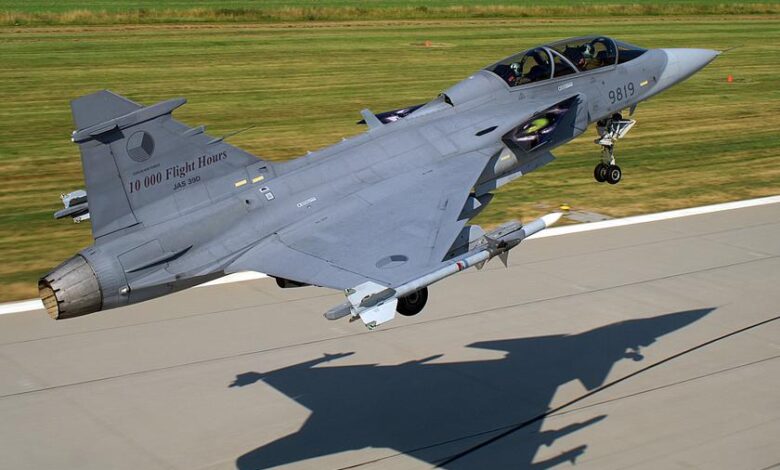Which Country Has The Most Superior Military Jets In The World?

In a world where air superiority is a cornerstone of national defense, one country stands above the rest when it comes to cutting-edge military jets.
From stealth to speed, agility to advanced avionics, this nation has developed and deployed the most formidable combat aircraft ever seen. In this guide we will see which country leads the field – you should have already guessed it from the cover photo!- and we will examine the reasons behind this superiority.
Air dominance today goes far beyond simply showcasing raw power. It plays a critical role in shaping global stability, ensuring a nation’s ability to defend its own skies, support ground operations, deter aggression, and stand beside its allies in times of crisis. As geopolitical tensions rise and emerging technologies redefine the nature of modern warfare, only a select few countries can keep up with the pace of change. Among them, United States stands clearly ahead, combining technological leadership, global presence, and combat-proven expertise to shape the future of air power.
The Country With the World’s Most Advanced Military Jets, according to SimplyFlying
The United States holds the undisputed title of having the most advanced fleet of military jets on the planet. Backed by decades of R&D investment, unmatched production capacity, and a vast global operational network, American combat aircraft are engineered with versatility, battlefield survivability, and power in mind. As of 2025, the US operates over 13,000 active military aircraft, spanning multiple branches including the Air Force, Navy, Marine Corps, and Army Aviation.
The United States Air Force leads with a fleet of advanced combat aircraft like the F-22 Raptor, designed for air superiority, and the F-35 Lightning II, a multirole stealth fighter now widely adopted by allied air forces. But American strength doesn’t rely on stealth alone. The USAF fleet still fields proven legacy jets like the F-15 Eagle and the battle-tested A-10 Thunderbolt II, affectionately known as the “Warthog.”
The US Navy brings its own set of advanced jets to the table, including the F/A-18E/F Super Hornet, a multirole workhorse of carrier aviation, and the F-35C, which extends stealth capabilities to sea-based operations. These aircraft operate from 11 nuclear-powered aircraft carriers, giving the US an extensive global reach.
Meanwhile, the US Marine Corps operates the F-35B, a short takeoff and vertical landing (STOVL) variant ideal for amphibious assault ships and austere runways. It is replacing the iconic AV-8B Harrier II, offering stealth and modern sensors in a more deployable package.
In addition to fighters, the US possesses an array of strategic bombers like the B-2 Spirit, B-1B Lancer, and B-52 Stratofortress, plus refueling tankers (KC-135, KC-46), electronic warfare aircraft (EA-18G Growler), ISR platforms (RC-135 Rivet Joint, E-3 Sentry), and next-generation stealth bombers like the Northrop Grumman B-21 Raider already in test flights.
This layered and interoperable ecosystem of air power combines stealth, range, payload, and versatility across every branch, ensuring the United States has a military aviation network that is global, combat-tested, and future-ready.
Fifth-Generation Fighters: The US Advantage

Fifth-generation fighter jets are defined by a set of capabilities that dramatically elevate battlefield performance: stealth, sensor fusion, networked warfare, and advanced situational awareness. The US is the only country operating two fifth-gen fighters at scale: the F-22 Raptor and the F-35 Lightning II. They represent a generational leap in multirole combat capability.
While other nations, like Russia with its Sukhoi Su-57 Felon, have introduced aircraft with fifth-generation ambitions, the F-22 remains the only fully deployed fifth-generation air superiority fighter in service today, developed in significant numbers.
Its design integrates stealth features, supercruise capability (sustained supersonic flight without afterburners), and exceptional agility. The aircraft is equipped with a sophisticated sensor suite that allows pilots to detect, track, and engage threats before being detected. In its air-to-air configuration, the F-22 carries six AIM-120 AMRAAMs and two AIM-9 Sidewinders.
Production of the F-22 concluded in 2011, with a total of 195 aircraft built, including test units. As of early 2025, approximately 183 Raptors remain in the US Air Force fleet, though not all are in active service.
The F-35 Lightning II is a multirole stealth fighter designed to perform a wide range of missions. Its advanced sensor fusion and networked capabilities provide pilots with exceptional situational awareness. The F-35 comes in three variants:
- F-35A: Conventional takeoff and landing variant used primarily by the US Air Force.
- F-35B: Short takeoff and vertical landing variant used by the US Marine Corps and allied forces.
- F-35C: A carrier-based variant designed for the US Navy.
- The F-35 program is a collaborative effort between the US and several allied nations. As of 2025, over 1,200 F-35s have been delivered globally, with the aircraft serving in various capacities across multiple air forces.
Innovation and Budget: Why the US Stays Ahead

It’s often said that you get what you pay for, and when it comes to military aviation, no country invests more than the United States. The US Department of Defense’s official Fiscal Year 2025 budget request is $849.8 billion, with a significant portion allocated to air power. This funding fuels a broad spectrum of programs that collectively push US air dominance into the future.
At the heart of this effort is the Next Generation Air Dominance (NGAD) program, a multi-faceted initiative to develop a sixth-generation fighter designed for contested environments where today’s jets may struggle to survive. This is about an ecosystem of capabilities, including autonomous wingmen, AI-enhanced decision systems, advanced radar evasion, and modular avionics that allow future upgrades without redesigning the entire platform.

Key to NGAD’s technical leap is propulsion. Through the Next Generation Adaptive Propulsion (NGAP) program, contractors like GE Aerospace and Pratt & Whitney Engines are developing adaptive cycle engines, technologies that adjust airflow mid-flight to balance thrust and fuel efficiency depending on the mission phase.
These engines are designed to give pilots unprecedented range, power, and heat management, characteristics necessary for both survival and dominance in 21st-century air battles.
But advanced aircraft are only part of the equation. The Pentagon is also investing in pilot training, recognizing that even the best aircraft might be ineffective without a well-trained human behind its control.
The US Air Force continues to run Red Flag exercises at Nellis Air Force Base, where American and allied pilots simulate real-world combat against highly capable, opposing “aggressor” forces. These live, scenario-based trainings mimic near-peer conflicts and help prepare crews for the complexities of multi-domain operations.
How Do Other Countries Compare?

According to the 2025 FlightGlobal World Air Forces report, the United States commands 25% of the world’s active military aircraft, boasting a fleet of over 13,000 aircraft, more than the next five countries combined (see the table below). But while the US remains dominant, several nations are actively developing next-generation platforms and expanding their aerial capabilities.
China, with 3,309 active aircraft, now accounts for 6% of the global military fleet. Its fifth-generation Chengdu J-20 stealth fighter has entered wider service in the People’s Liberation Army Air Force (PLAAF), and upgrades continue on systems like the J-16 and J-11. Despite rapid development, China’s combat fleet is still largely untested in actual conflict, and interoperability across units remains limited compared to US standards.
Russia, historically a major aerospace power, retains a fleet of 4,292 military aircraft (8% of the global share). Its Su-57 “Felon” is billed as a fifth-generation fighter, but production has been slow; only a handful are in active service as of 2025. Sanctions, export limitations, and economic pressures have slowed modernization efforts, leaving much of Russia’s fleet reliant on upgraded Cold War-era platforms.
Among European countries, France stands out with 976 active aircraft, making up roughly 2% of the global fleet. The Dassault Rafale multirole fighter continues to perform in both NATOand export operations, and France is currently working together with Germany and Spain on the FCAS (Future Combat Aircraft System) development program.

The UK (not individually listed in the table but part of the “Other” 42% category) operates a mix of Eurofighter Typhoons and F-35Bs, while Germany and Italy maintain strong Eurofighter fleets with additional F-35 orders underway. The UK, Italy and Japan are pushing a joint development program, GCAP (Global Combat Air Programme). While promising, these are still years from operational deployment.
Meanwhile, other Indo-Pacific players are emerging rapidly. India (2,229 aircraft, 4% global share) is pursuing indigenous fifth-generation capabilities through the HAL AMCA program, now approved for production, and South Korea (1,592 aircraft) is assembling its KF-21 Boramae.
US Air Power: Battle-Tested and Deployed Worldwide

While many countries operate impressive fighter fleets on paper, the real test of air power lies not in airshows or spec sheets, but in the ability to deploy and perform under live combat conditions, consistently, globally, and at scale. And this is where the United States stands entirely alone.
No other country operates a military aviation network as global and combat-tested as the United States. From the deserts of the Middle East to the mountains of Afghanistan, the skies of Europe, and the contested waters of the Indo-Pacific, US jets have been active participants in nearly every major military conflict of the last 30 years.
Whether it’s F/A-18 Super Hornets launching from carriers in the Persian Gulf, F-15Es conducting precision strikes in Syria, or F-35s flying joint operations with NATO allies, these aircraft have proven themselves not just once, but across multiple theaters, mission types, and generations of warfare.
In the 21st century, military jets have evolved into much more than just fast-flying machines. These jets are no longer judged solely by their speed or agility, they are now sophisticated airborne platforms, equipped with advanced sensors, data links, and precision weapons.
Their impact isn’t limited to air superiority, but by how well they operate as part of a much larger defense network; they play a central role in gathering intelligence in real time, jamming enemy systems, coordinating forces, and executing decisions with unprecedented speed and precision, being vital nodes in a complex web of defense systems.
The Future of Air Dominance

Looking ahead, the US continues to invest in next-generation air dominance through programs like NGAD (Next Generation Air Dominance) NGAD (Next Generation Air Dominance) and the B-21 Raider. In addition to that, the US is already testing technologies that combine drones with manned fighters, using AI to make real-time decisions in battle. Future jets may be defined more by their networks than by their speed or firepower alone.
As warfare becomes more data-driven and contested airspace becomes more complex, the next leap in air dominance will depend on connectivity, autonomy, and resilience, always keeping in mind the human factor. To quote from United States Air Force Chief of Staff General David W. Allvin at the White House, when the US President announced NGAD as Boeing F-47:
Air dominance is not a birthright, but it’s become synonymous with American air power. But air dominance needs to be earned every single day, and since the earliest days of aerial warfare, brave American airmen have jumped into their machines, taken to the air, and they’ve cleared the skies, and whether that be clearing the skies so we can rain down destruction on our enemies from above, we can clear the path to the ground forces below.





